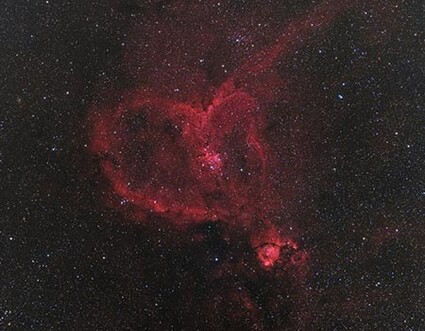Stars over Sisters 8/26/2020
Last updated 8/25/2020 at Noon
September is a transition month when it comes to stargazing. The constellations of summer are slowly making their way westward, while those of autumn begin to appear in the eastern sky. And, of course, the longer nights, coupled with still-comfortable temperatures, should provide ideal conditions for taking in the celestial sights.
Ascending in the northeast sky after dusk is the prominent W-shaped constellation of Cassiopeia, queen of Ethiopia in legend. Although listed in most sources as a stellar grouping of autumn, from Central Oregon’s latitude the constellation is said to be circumpolar, meaning it never sets below the horizon. It is the 25th-largest constellation by area.
Cassiopeia’s brightest star is Schedar, a 2.2 magnitude orange/red giant luminary that is about five times the mass of our sun but with a much cooler surface temperature. Astronomers estimate its diameter is approximately 84 times larger than the sun and lies some 228 light-years away. It is said that Schedar denotes the heart of the Queen.
While there are only two Messier objects in Cassiopeia, M52 and M103, both open star clusters, the constellation features many deep sky treasures. This is due in part because an arm of the Milky Way is found there. One of the finest of these is IC 1805, commonly known as the Heart Nebula. It is officially classified as an emission nebula that contains glowing regions of ionized hydrogen gas. Near the nebula’s center lies a young cluster of stars that formed only about 1.5 million years ago. Known as Melotte 15, these stars range in size from a few bright supergiants each about 50 times the mass of our sun, to many more far dimmer stars that are only a fraction of the sun’s mass.
Although the Heart Nebula is quite large, having a diameter equal to five full moons, it is exceedingly faint at magnitude 18.3, far beyond the reach of backyard telescopes. It lies 7,500 light-years from the earth.
Fall in the Northern Hemisphere begins at 6:31 a.m. on September 22 when the sun reaches the Autumnal Equinox. At that time, the sun will cross the celestial equator and begin its six-month journey into the celestial southern hemisphere.
September is a good month to try to spot the Zodiacal light in the early morning before sunrise. The light is a roughly triangular shaped faint glow that appears to extend from the sun’s direction along the ecliptic. The phenomenon is caused by sunlight that is scattered by interplanetary dust. Autumn is the best time of year to see the predawn Zodiacal light because the ecliptic makes a steep angle with the horizon. Your chance of seeing it improves when viewed from a dark location with no moon.
The solar system’s two largest gas giants still rule the evening sky. Jupiter is the brighter of the two, while fainter Saturn is approximately seven degrees farther east by mid-month. Both are still in Sagittarius and well placed for observation.
Later in the month Mercury tries to put in an evening appearance. Although on October 1 the tiny orb will be a full 25 degrees from the sun, it will only stand three degrees above the western horizon 30 minutes after sunset. The best chance to see it may be September 21, when Mercury and Spica lie less than one degree apart. Although too dim to see with the naked eye, on September 11 Neptune becomes an evening object as well.
The remaining three planets — Venus, Mars, and Uranus — are currently residents of the morning sky.
Since the Full Corn Moon falls on September 1, the moon will be on the wane until September 17 when it will go dark. For the remainder of the month, Earth’s only natural satellite will gradually become more illuminated.

















Reader Comments(0)